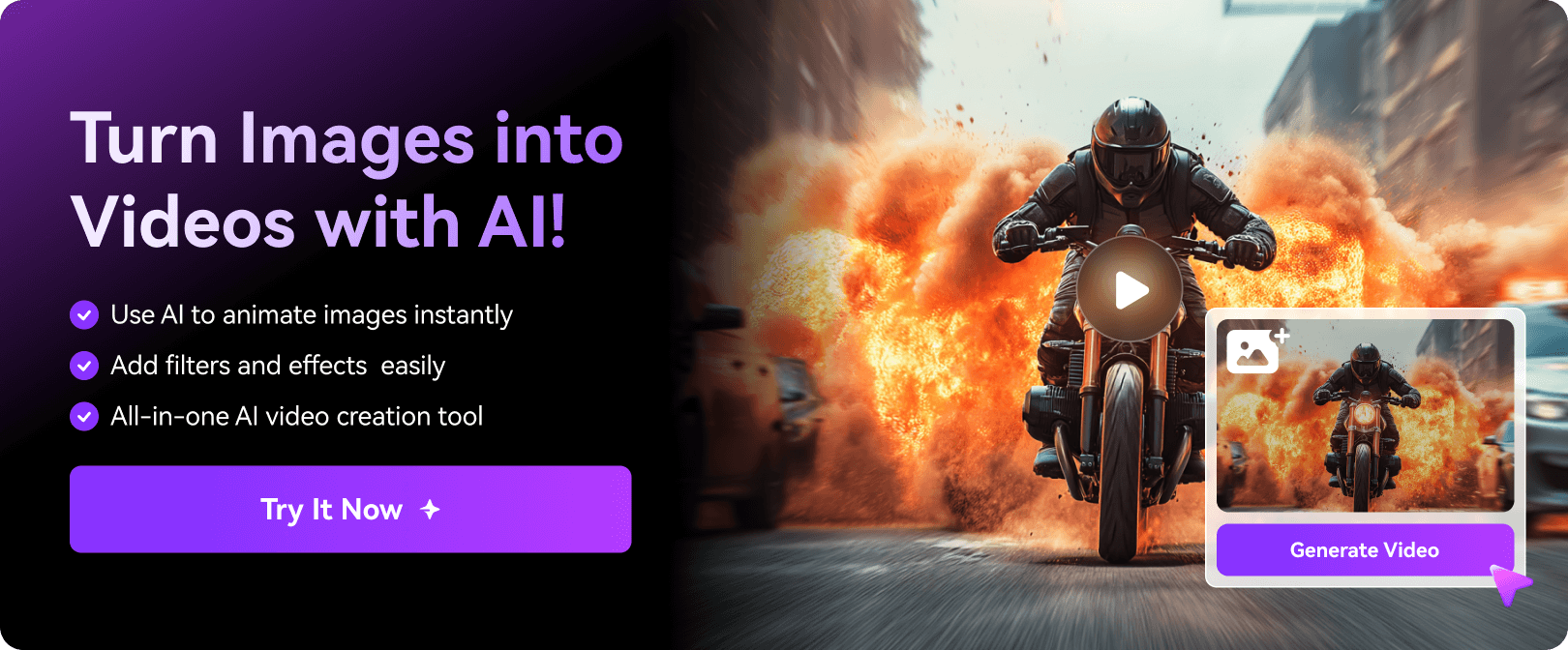Open source AI platforms have expanded the power of artificial intelligence by making it accessible to developers and researchers everywhere. This has allowed professionals and newcomers to build on AI algorithms, pioneering innovative AI projects. Besides individual developers, open source adoption has become crucial to business growth in the current digital world.
A 2023 State of Open Source Report has shown that 80% of respondents have increased the use of open source tools in their organizations, and the driving reason isn’t cost reduction. They view open source AI adoption as a way to stay ahead of new technology and competitors.
In this article, I will walk you through the basics of open source platforms- what they are and how you can benefit from them. We will also look at the 8 best open source AI platforms and tools you can leverage to amplify your professional skills.
In this article
Part 1. What Is Open Source AI?
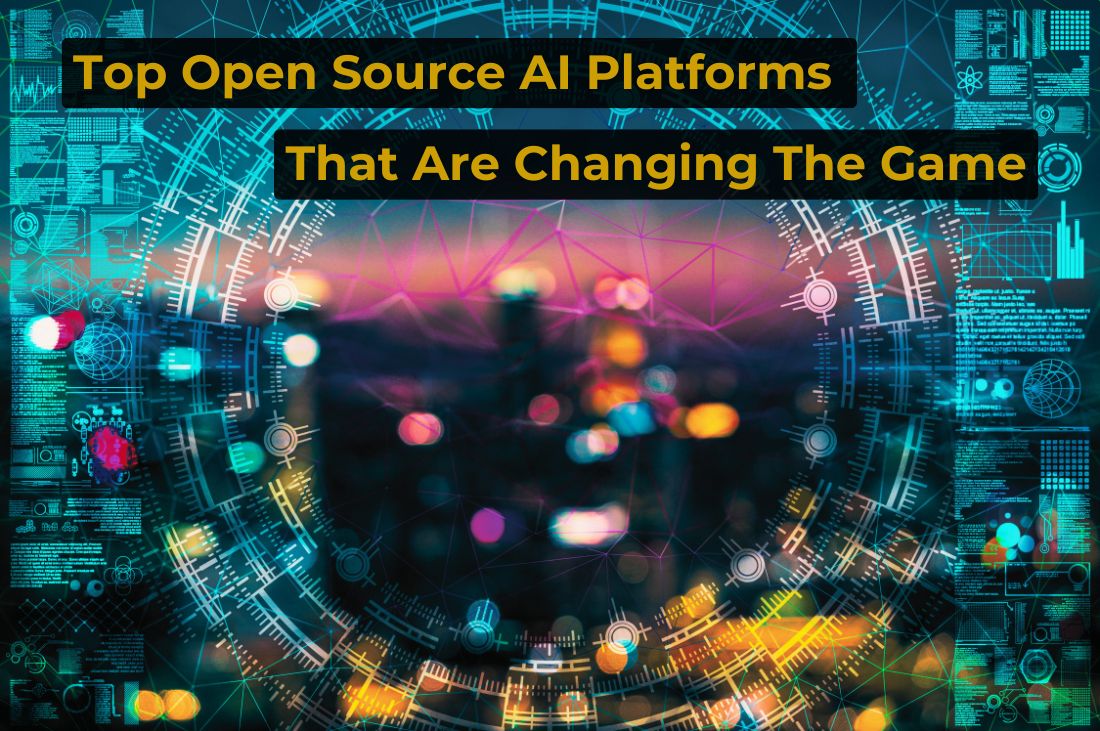
Open source AI is a philosophy of collaboration between innovators in artificial intelligence. Open source AI models are developed in a way that the source code can be shared, modified, and used among the general population. Public access to AI codes has fostered a collaborative environment where researchers and developers can benefit from existing AI advancements.
With open source AI models, leaps in artificial intelligence are no longer limited to resource-rich large organizations. Now, anyone with the passion to innovate and build AI models can use existing algorithms for collective technological progress.
Part 2. Benefits Of Using Open Source AI
Open source AI is valuable to different sectors. From AI enthusiasts to large companies- the applications of open source AI models are practically endless if you consider the constant development in AI. Here’s a list of the key advantages of these innovative models.
- Transparency- AI is being developed at a startling pace. This makes it difficult to track the factors that artificial intelligence models take into account when making independent decisions. With open source models, users can see the actual workings of the model, how it makes decisions, and their ethical implications. This transparency ultimately builds trust among end users.
- Multiple use cases- Open source AI models can be applied to multiple industries in various practical applications. Some of them include natural language processing, object detection, predictive analysis, and speech processing.
- Community collaboration- Open source AI tools make it possible for developers with different expertise to come together and find creative solutions. This speeds up technological advancement, allowing issues to be identified and resolved quickly.
Part 3. Drawbacks Of Open Source AI
While open source AI is the answer to several digital-age problems, there are a couple of challenges and ethical considerations users must take into account.
- Data biases- AI open source platforms are trained on publicly available data. This increases the risk of inherent biases in the model. The problem is that programmers still don’t know how to identify and remove biases from existing AI models.
- Incorrect information- The information on open source AI systems can sometimes be inaccurate and misleading as it’s based on publicly available data.
- Limited features- Open source tools are not as powerful as their proprietary counterparts. This limits their development and application. The scope constraint can be problematic for businesses that are relying on open source AI models for technological advancements.
Part 4. Best Open Source AI Platforms And Tools
Let’s move on to the best open source AI models available to you.
1. Keras
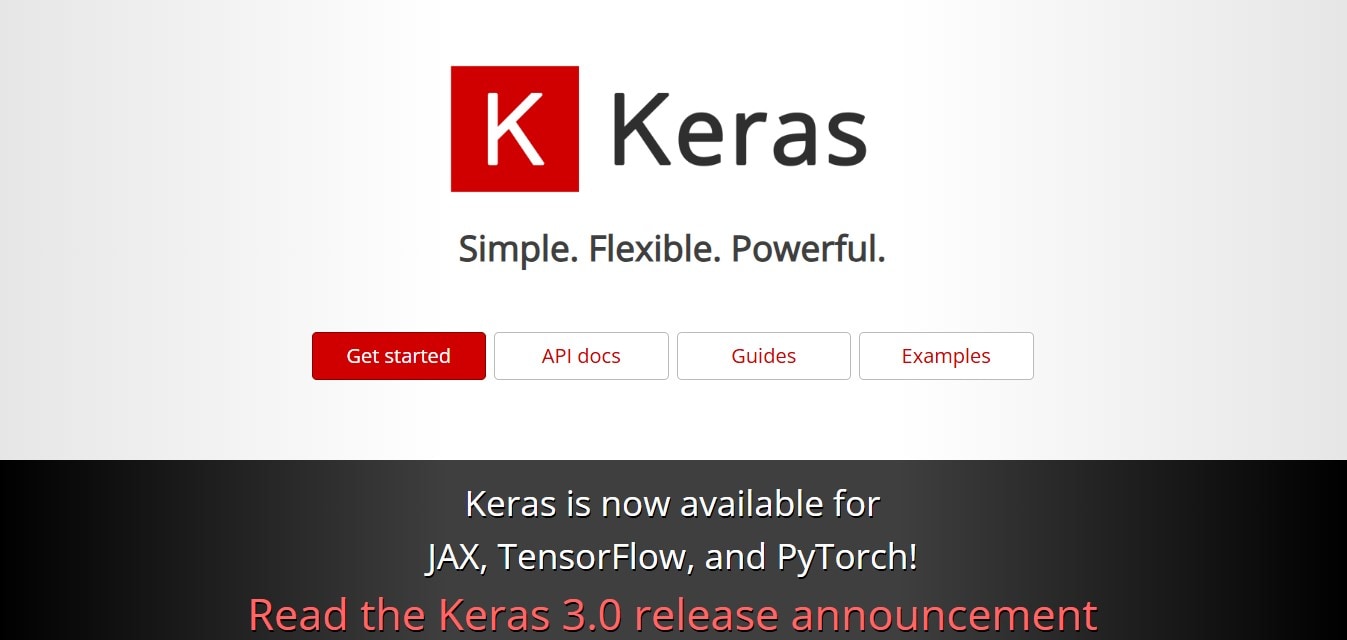
Keras is a Python-based neural network library that allows users to share the front end of their deep learning models effortlessly. It has a beginner-friendly interface and modular design. The platform’s highlight is its high-level API, which makes it possible for newcomers and advanced users to make the most of the open source AI model. Developers can export their AI models easily from Keras and run them in browsers, iOS, and Android.
Use-cases
Keras is a good choice for educational programs and deep-learning tasks.
2. TensorFlow
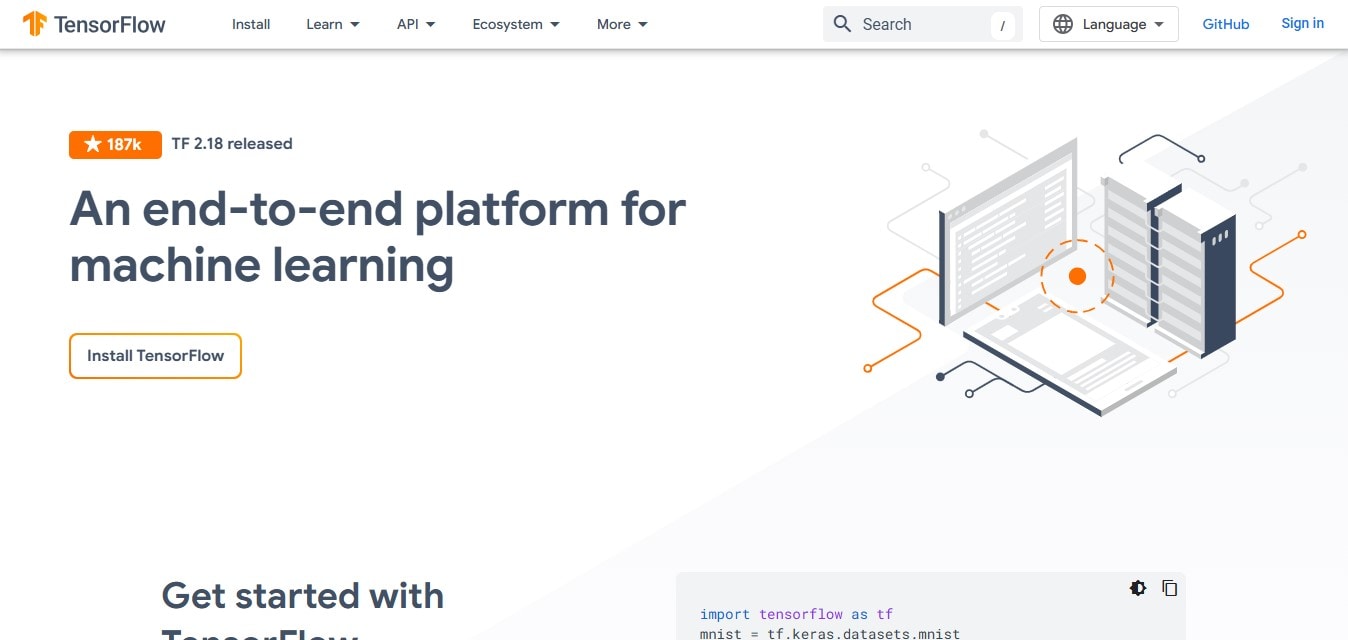
Part of the Google network, TensorFlow is an open source platform for building and training AI and machine learning models. The AI framework supports various programming languages, including JavaScript, Python, and Swift. TensorFlow’s vast library of pre-built AI models and tools combined with its easy access makes this platform perfect for beginners and seasoned professionals.
Use-cases
Large-scale machine learning tasks across industries like finance, healthcare, and robotics.
3. PyTorch
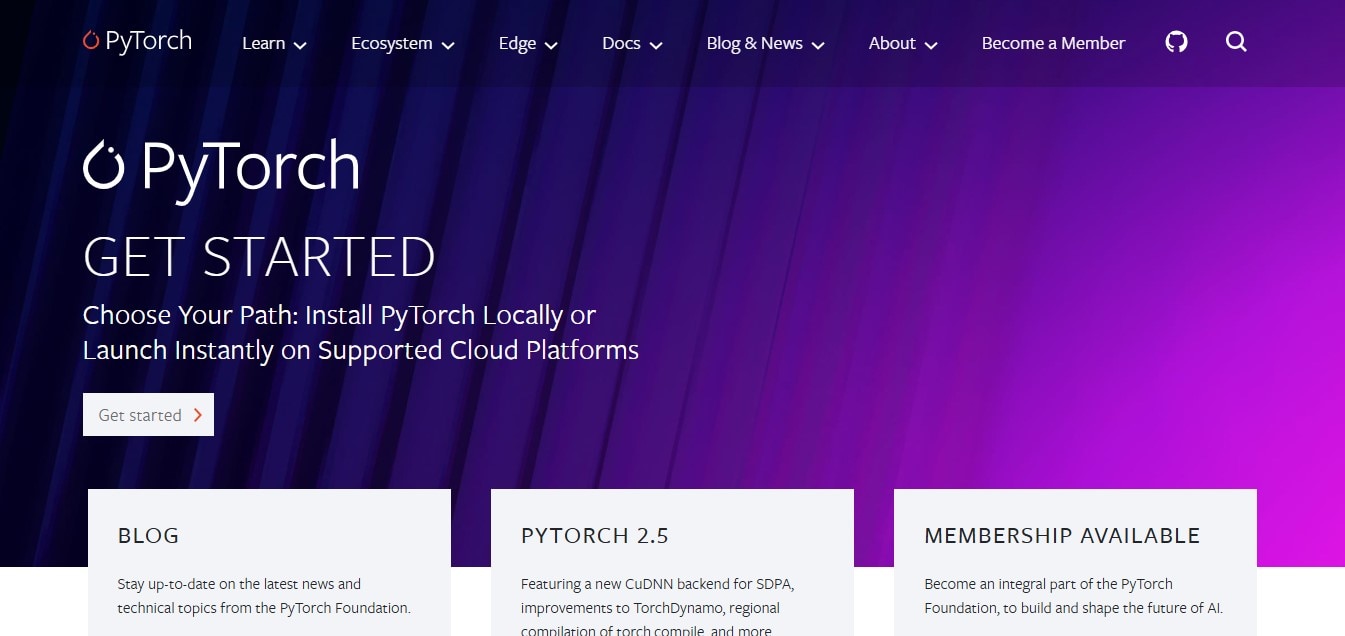
PyTorch is a product of Facebook’s AI Research lab. It is an open source machine learning library that leverages a more flexible approach to building deep learning models. Its vast libraries and datasets enable users to turn ideas into functional applications. PyTorch’s seamless integration with Python makes it easier for programmers to bundle up usable blocks of code. They can then plug the code blocks into more elaborate sequences for complex jobs.
Use-cases
PyTorch is ideal for computer vision (object detection, style transfer, etc.) and natural learning processing (text generation, translation, etc.).
4. OpenAI
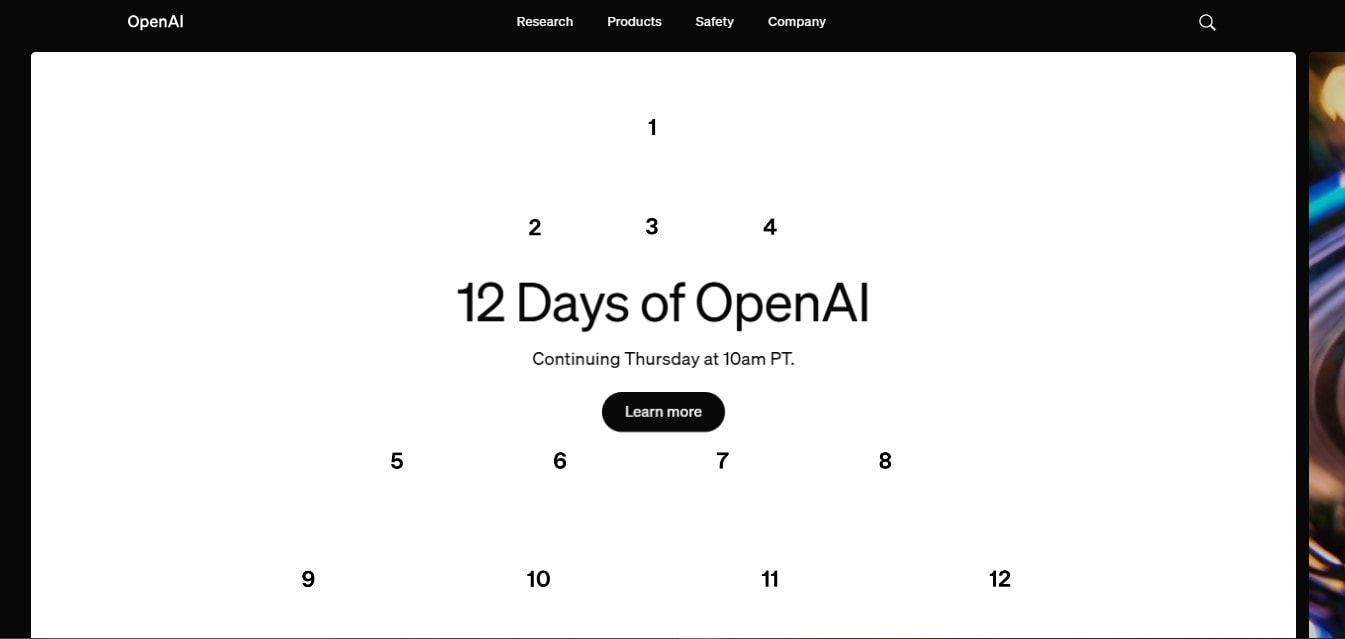
OpenAI is one of the pioneers of AI open source models. The company is dedicated to furthering research in artificial intelligence in a way that minimizes its risks to humanity. One of its natural language processing AI models, codex has the ability to transform regular text into a programming code. GPT-4o is another leading model that has changed the NLP industry. However, a new model called O1 can blow its predecessor out of the water with its multi-step processing ability.
Use-cases
OpenAI can be used for programming and debugging code but its main strength lies in natural language understanding, for example, virtual assistants, chatbots, etc.
5. H2O.ai
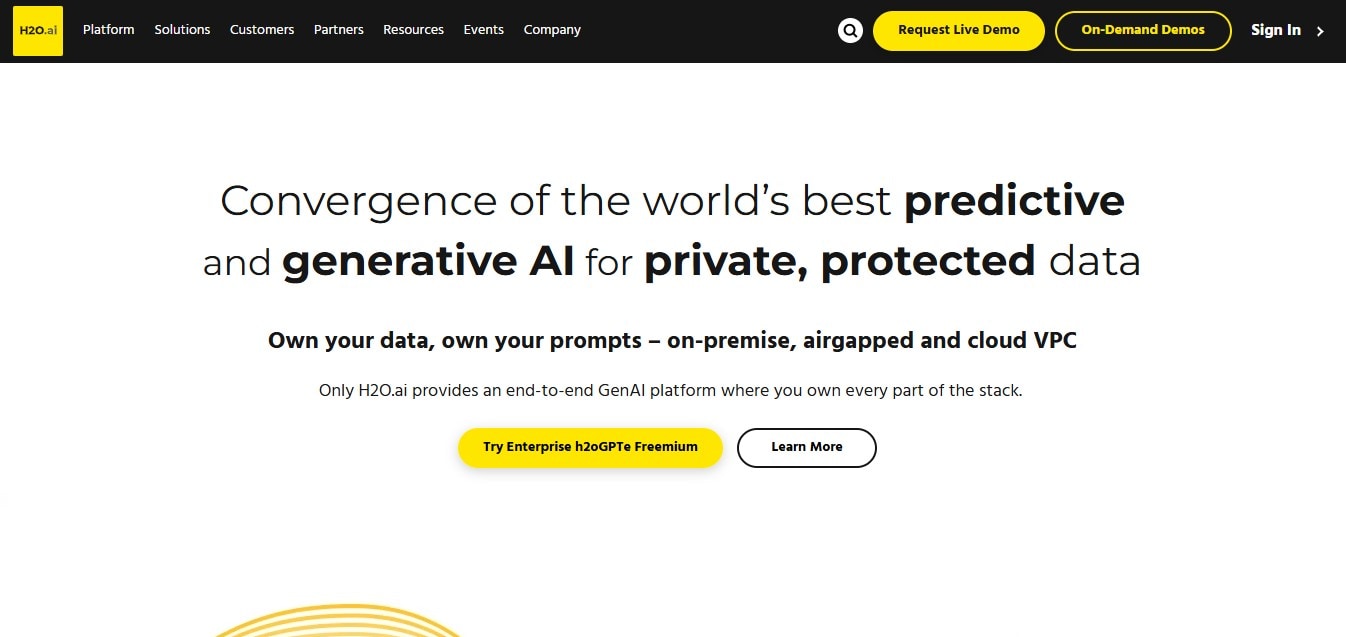
Another thriving community of more than 129,000 data scientists and 12,000 organizations can be found under the umbrella of H2O.ai. This open source AI platform is committed to making machine learning accessible to businesses of all sizes.
Thanks to H2O.ai, users can extract insights from data without any knowledge of deployment or tuning machine learning models. From its leading product H20 to Deep Water, Sparkling Water, Steam, and Driverless AI- there is an AI solution for everyone.
Use-cases
H2O.ai’s predictive analysis can be useful in industries like finance, insurance, and healthcare.
6. Amazon SageMaker
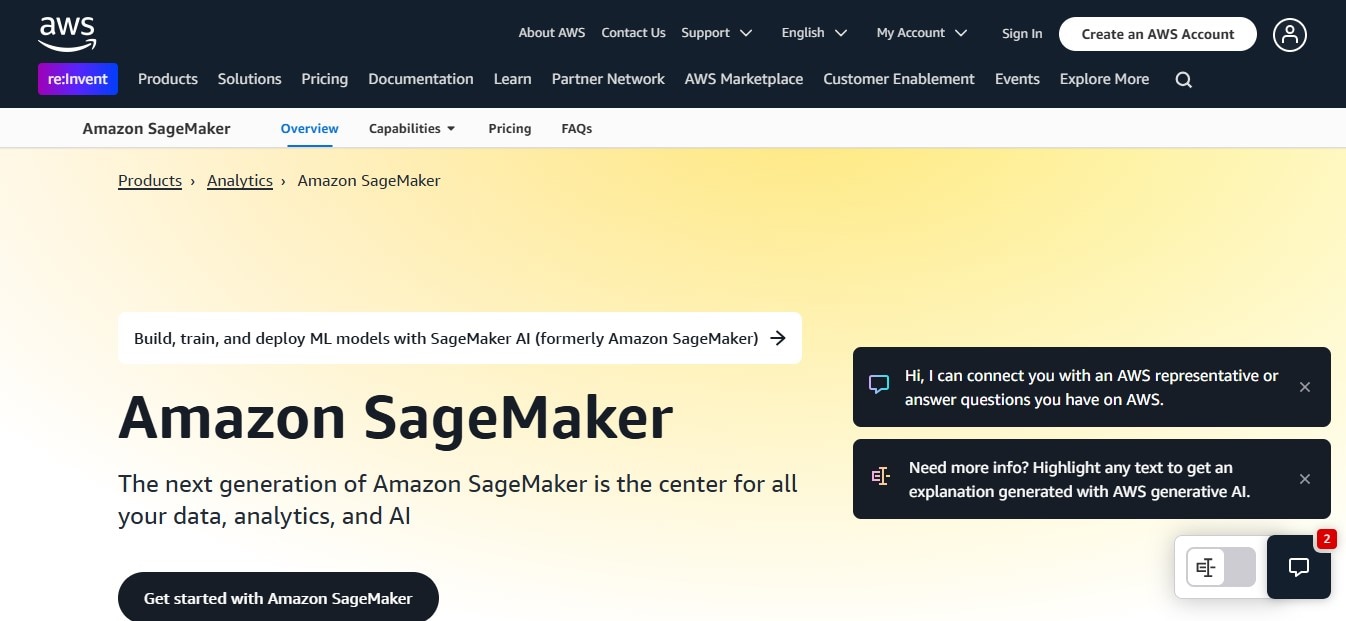
Amazon SageMaker is a product of Amazon Web Services, aimed at simplifying the process of building, training, and deploying machine learning models. The platform provides data scientists and developers with the necessary tools to create AI projects based on pre-built algorithms. This enables users to quickly build predictive analytics applications and automate a production-ready AI model.
Amazon SageMaker is an all-inclusive platform that guides professionals throughout the model-building process. From data preparation to model building, training, optimization, deployment, monitoring, and management- the fully managed platform is a complete solution for developers.
Use-cases
Amazon SageMaker can be used to create custom AI solutions for demand forecasting, fraud detection, and customer personalization.
7. Rasa
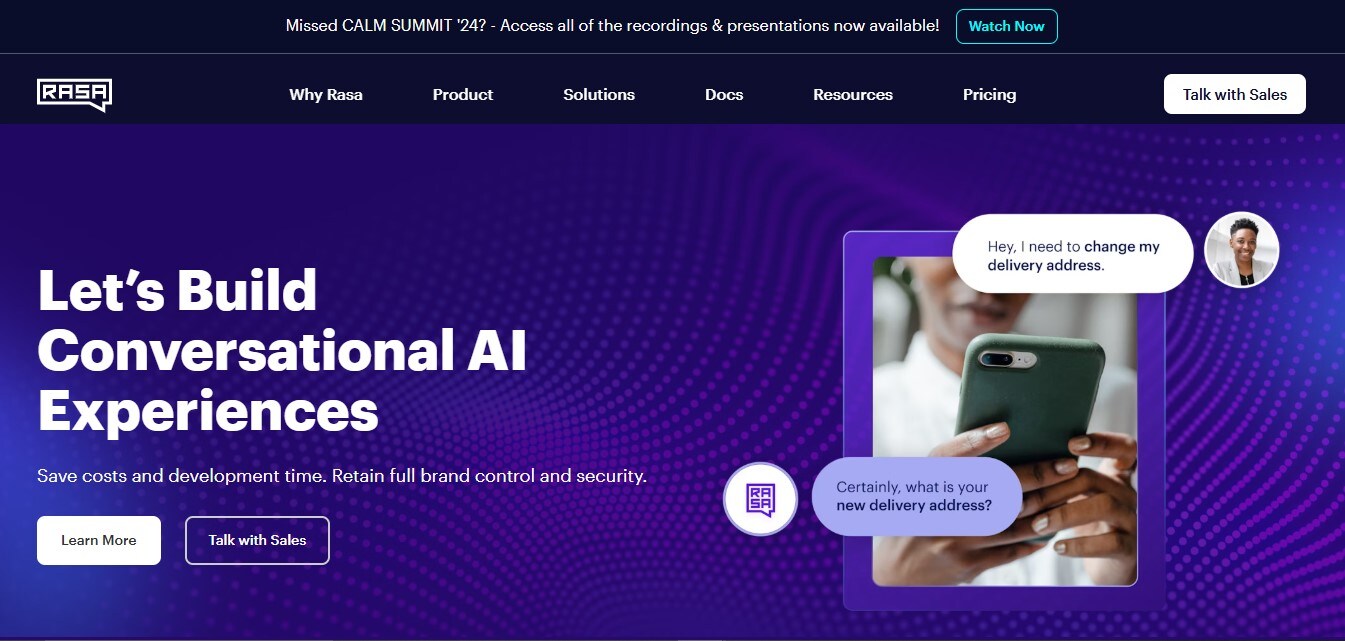
Rasa is an open-source machine learning platform where developers can build, test, and deploy conversational AI applications. Its AI-powered tools and features make it easier for professionals to create customized customer service solutions. Rasa is equipped with machine learning technology that allows it to understand and generate natural language responses. This allows the model to execute complex dialogue commands.
Use-cases
Rasa can be useful in building conversational AI applications, such as virtual assistance, AI tutors, and customer support chatbots.
8. GitHub
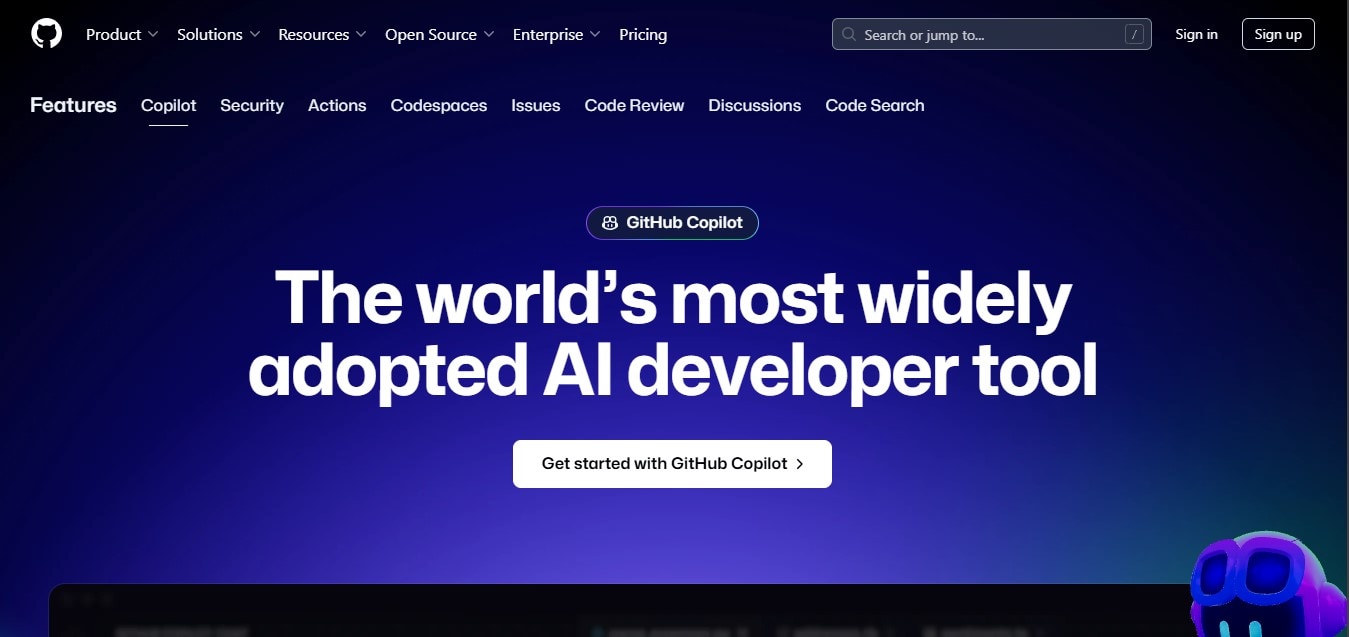
GitHub is a leading resource for developers to share programming code and collaborate on projects. The platform is beginner-friendly and free to use, making it pivotal in promoting open-source software. GitHub’s highlight is its collaboration platform.
Usually, when diverse teams work together on a project, codes written by different programmers may end up canceling each other or creating an unexpected impact on how the ultimate code works. GitHub offers a solution to this problem by highlighting how both codes will alter the main branch. This makes it easier for teams to identify errors, making the coding process more streamlined and effective.
Use-cases
GitHub allows teams to work on coding projects. It also gives developers access to the free cloud to create public-facing repositories.
Conclusion
The movement towards open source AI tools has sparked a new era of technological collaboration. These powerful and flexible solutions can be modified, trained, and deployed to meet customized business needs. Each best open source AI platform mentioned in this article has its own set of strengths and weaknesses. Now it’s up to you to choose one that fits your programming goals.
Start Online For Free



